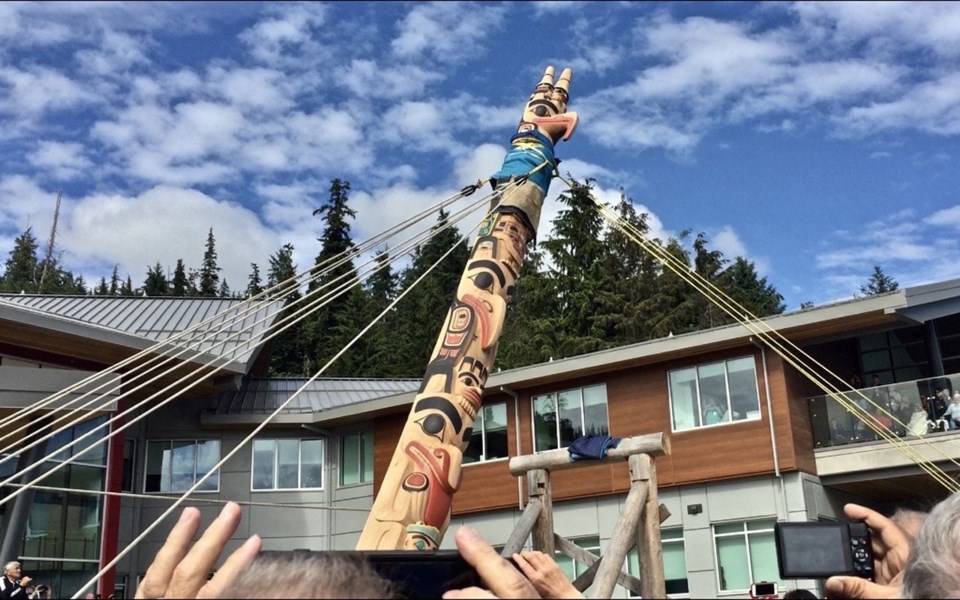In October 1985, with a scrum of national media clustered on a muddy logging road on Lyell Island, deep in the remote archipelago then known as the Queen Charlottes, a young Haida leader named Miles Richardson spoke the words that would fundamentally change the course of Canadian history. Holding the line on a logging blockade, Richardson averred: "This is Haida land and there'll be no further logging in this area."
He would repeat it many times over eight long months of protest. In the end, there would be 72 arrests, many of them elders who flew in to take a peaceful stand for what they believed: that the destiny of the Haida should be in Haida hands. Some were arrested by teary-eyed RCMP of Haida heritage, forced to by their superiors. Broadcast across the nation, images of the confrontations shifted understanding and support for land-claim issues that would, by 1993, see an unprecedented agreement between the government of Canada and the Haida Nation in the equal-partner creation and management of Gwaii Haanas National Park Reserve. In 2009, the colonial name "Queen Charlotte Islands" was officially returned to the Crown and the archipelago formally recognized as Haida Gwaii. On Lyell Island—Athlii Gwaii—a pole commemorating the protests was raised in 2013.
All this is on my mind in June when I arrive in the village of Queen Charlotte, with its fishing-fleet dock, grimy DFO trucks, and scatter of funky houses. A mop-haired boy clutching a ceremonial eagle feather in the Sea Raven restaurant is a reminder that the first fishermen here were, in fact, the Haida, whose influence in land and resource issues is greater now than at any time since Europeans began their systematic exploitation of these lush, biodiverse islands. The cultural renaissance that both sparked the Athlii Gwaii blockade and blossomed from it is now manifest in a strength, pride and generosity that any visitor can feel.
On this occasion, there's much to share, and the energy is palpable. To begin, tomorrow is Hospital Day, Haida Gwaii's oldest civic holiday, commemorating how a community came together to build its first hospital in 1908. This year's 110th incarnation, however, is special. The Haida will also raise a wellness pole for a new hospital opened in 2016. All totem-raisings here are big deals, but a "monumental pole" (the preferred terminology for a 15-metre big gun such as this) hasn't been raised in the village of Queen Charlotte in some 200 years.
The day starts with a short parade of vehicles from which people toss candy to kids who stuff sacks with the sugary largesse. It winds past the harbour and onto the grounds of the community centre, where a group of old folks in blue club shirts do Tai Chi on a field where games and contests will be held. As the crowd swells, children tear through a forest of adult legs like it's the real deal. Booths and concessions offer fun activities. There's also a lot of food: burgers and dogs, of course, but also Rosie's kebabs, which fly off her barbeque. Beside her, a woman in a cedar hat makes the local favourite—fried bread. I try both, pronouncing Rosie's kebab and sauce, and the hot fried bread rolled in cinnamon sugar, some of the best things I've ever eaten.
Throughout the day the sky is typical Haida Gwaii—two blankets, grey and black, pulled up from the horizon. But the sun breaks through for the 4 p.m. pole raising. Within minutes, a thousand people have gathered outside the hospital.
The proceedings begin by honouring the master carvers and their families. Haawa (thanks) is given to the tree, a 700- to 800-year-old cedar. Then the carvers scare off bad spirits by threatening the pole with carving tools. This is followed by a procession of Haida matriarchs in button-blanket regalia who place beads in the hole that will hold the totem. Together with their friend, a Tibetan monk, the women bless the pole with a wet spruce bough and handfuls of eagle down. Speeches are made, and the hard hats that delivered the pole and engineered the block and tackle array to raise it are introduced. No one's contribution goes unnoted.
Then, with great enthusiasm, the chief rope-rigger orchestrates the raising over a loudspeaker. Pull!
With dozens hauling on the ropes, it takes under five minutes to raise the pole; during adjustments, one of the ropes breaks and people are sent flying, but all to laughter. Dancing, drumming and singing ensue while a few quietly sneak off to the community hall in nearby Skidegate to grab seats for the subsequent potlatch to which, in keeping with tradition, all islanders are invited.
At the feast, I meet two Whistler girls here to kayak Gwaii Haanas. A friend had done it the year before, and when they saw pictures, they were enchanted; like myself, they are drawn to this mystical place. And what we have seen together today is that it takes a village to raise a pole, but it takes a land—and culture—to make it stick.
Leslie Anthony is a science/environment writer and author who holds a doctorate in connecting the dots.




